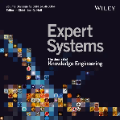Machine learning is the science of credit assignment: finding patterns in observations that predict the consequences of actions and help to improve future performance. Credit assignment is also required for human understanding of how the world works, not only for individuals navigating daily life, but also for academic professionals like historians who interpret the present in light of past events. Here I focus on the history of modern artificial intelligence (AI) which is dominated by artificial neural networks (NNs) and deep learning, both conceptually closer to the old field of cybernetics than to what's been called AI since 1956 (e.g., expert systems and logic programming). A modern history of AI will emphasize breakthroughs outside of the focus of traditional AI text books, in particular, mathematical foundations of today's NNs such as the chain rule (1676), the first NNs (linear regression, circa 1800), and the first working deep learners (1965-). From the perspective of 2022, I provide a timeline of the -- in hindsight -- most important relevant events in the history of NNs, deep learning, AI, computer science, and mathematics in general, crediting those who laid foundations of the field. The text contains numerous hyperlinks to relevant overview sites from my AI Blog. It supplements my previous deep learning survey (2015) which provides hundreds of additional references. Finally, to round it off, I'll put things in a broader historic context spanning the time since the Big Bang until when the universe will be many times older than it is now.
翻译:机器学习是信用分配的科学:找到预测行动后果并有助于改进未来业绩的观察模式; 信用分配也是人类理解世界如何运作的需要, 不仅对于在日常生活中航行的个人, 并且对于根据过去的事件解释现在的历史学家等学术专业人士来说, 也是需要的。 这里我着重介绍现代人工智能(AI)的历史, 由人工神经网络(NNS)和深层学习(1965年-)主导, 在概念上更接近于古老的网络信息领域, 而不是自1956年以来所谓的AI(例如专家系统和逻辑编程)。 现代的AI历史将强调传统AI文本书籍的重点之外的突破, 特别是今天的NNIS的数学基础, 如链条规则(1676年), 第一位NNIS(线性回归,circa 1800年), 以及第一位工作深度学习者(1965年-) 。 从2022的角度来看, 我提供了一个时间框架, 而不是从后视来看, 最重要的相关事件在NNIS的历史上, 深层学习, AI, 计算机科学, 数学和数学的数学, 现在的数学基础, 最后的BiII 基础, 提供了我之前的许多历史的翻版的翻版, 。




